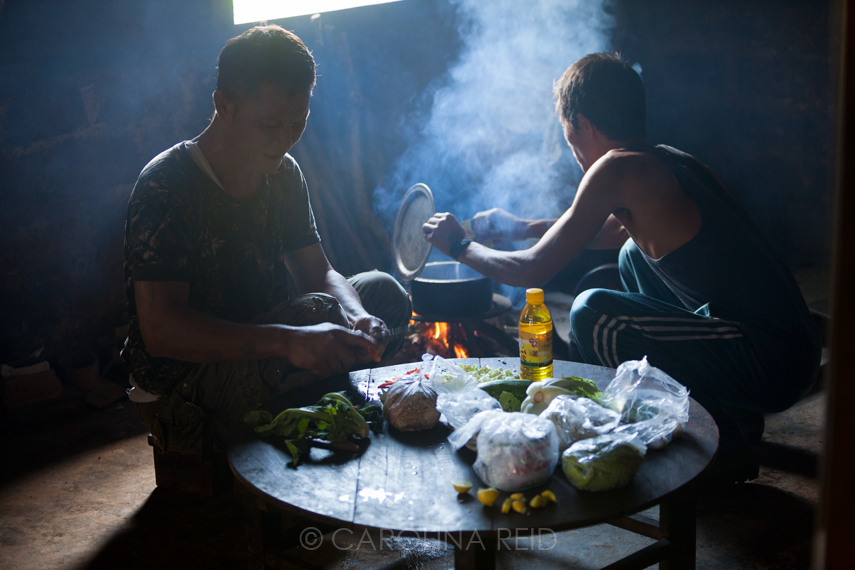Green Hill Valley Elephant Camp, Kalaw (November 2012)
Young mahouts (elephant riders), playing Chinlone, the traditional sport of Myanmar. Chinlone is a non-competitive sport played with a rattan ball where the focus is on artistry.


Bagan (November 2012)
Bagan is famous as the centre of Myanmar’s thriving lacquerware industry. In order to produce a good piece of lacquerware, its surface must first be painted on the inside and outside with lacquer and then stored in a dry cellar.


Mandalay (November 2012)
The Saungdon or covered approach of the Kuthodaw Pagoda, a Buddhist stupa containing the world’s largest book, the sacred scriptures of Theravada Buddhism that are inscribed in gold on huge marble tablets.


Paleik (November 2012)
A monk praying at a monastery in Paleik which is located about 12 miles south of Mandalay.


Pindaya (November 2012)
A monk saying morning prayers at the Shwe U Min Pagoda or Golden Cave Pagoda, located in the entrance to the southernmost Pindaya cave. These caves are a major Buddhist pilgrimage site and are located on a limestone ridge in the hills of Shan State.
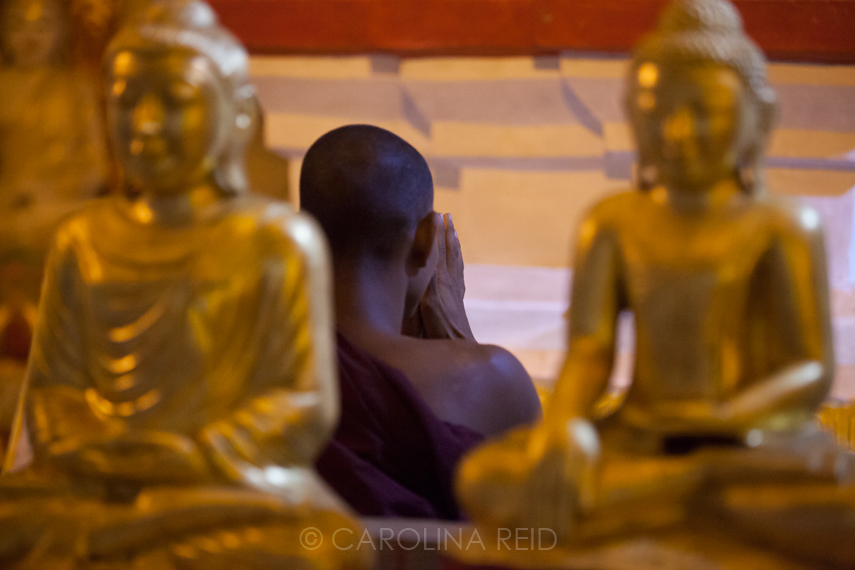

Bagan (November 2012)
In the final stage of the six-month lacquerware process, an artisan fills in the etched lines of the traditional patterns with different colours.
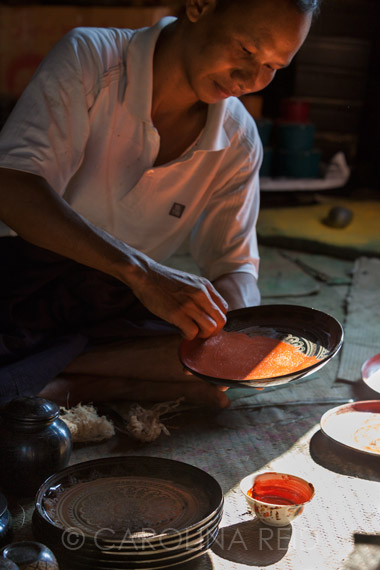

Nyaung U (November 2012)
Located in the northeastern part of Bagan, the Mani Sithu Market in the village of Nyaung U sells a variety of Myanmar goods including souveniers, clothes such as the traditional longyi, rattan items and a wide selection of fruit and vegetables.
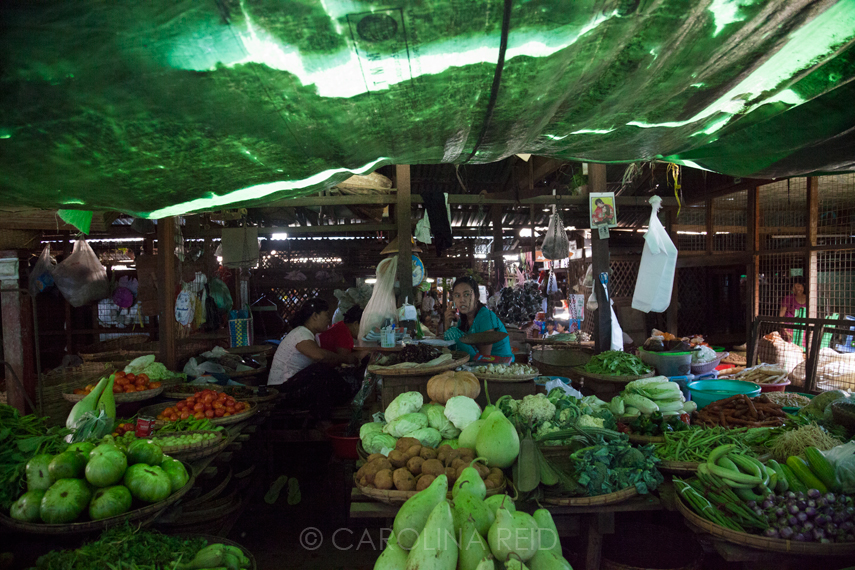

Popa (November 2012)
A woman sleeps during the hottest time of day in the village of Popa near Mount Popa, a local pilgrimage site.


Nyaung U (November 2012)
A local girl walking through the Mani Sithu Market. The market runs 6 am to 5 pm, but is at its most lively before noon.
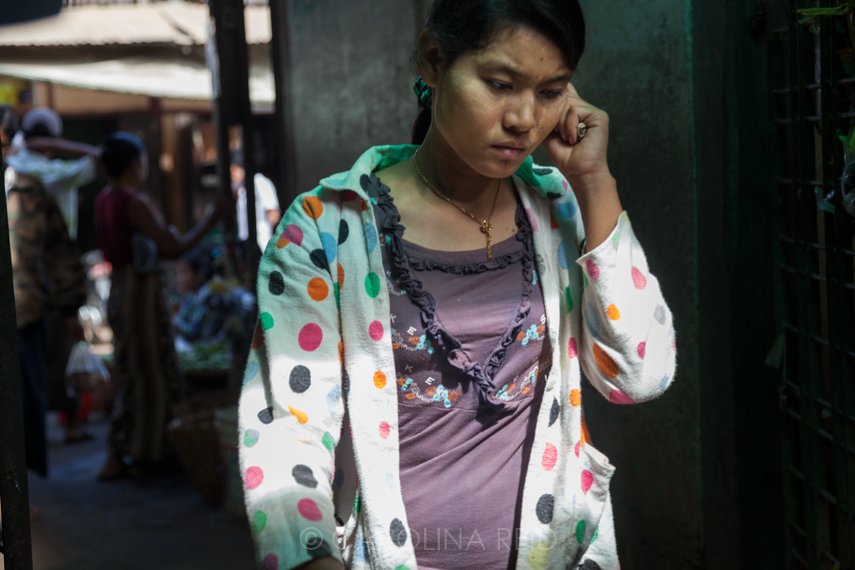

Bagan (November 2012)
Bagan is famous for its beautiful lacquerware. Once finished drying, the lacquers are carefully washed and sandpapered if necessary. This stage is very important for the quality of the future lacquer.
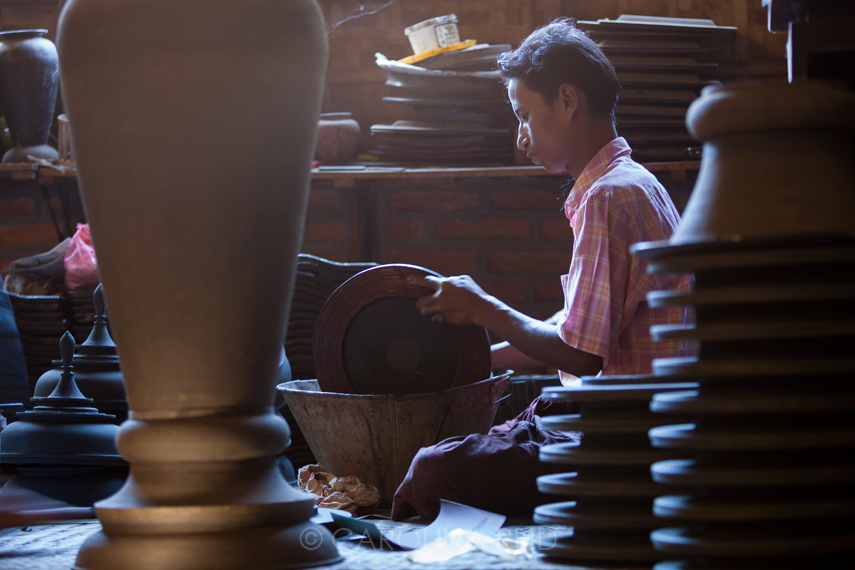

Pein Ne Bin (November 2012)
The primary school in the Palaung hill-tribe village Pein Ne Bin. The Palaung, a name of Burmese origin, are a group of Mon-Khmer speaking peoples living in the mountains of Shan State and southern Kachin State in Myanmar.


Mandalay (November 2012)
Cockfighting is still a popular sport in Burma. In the 16th century, the future kings of Thailand and Burma reputedly agreed to have a cockfight instead of going to war.


Green Hill Valley Elephant Camp, Kalaw (November 2012)
The mahouts bathe the elephants in their care once a day. Each of the camp’s seven elephants has his or her personal mahout, and each mahout lives at the camp with his wife and children.
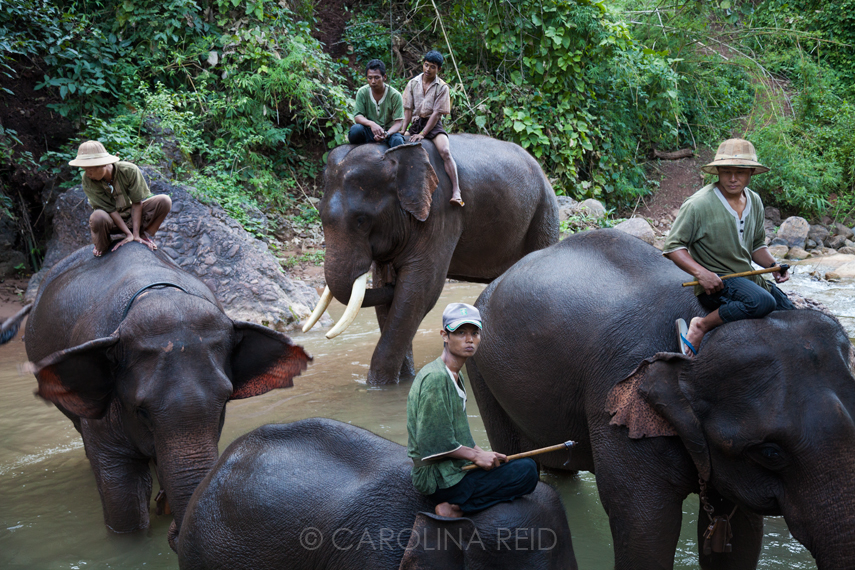

Pein Ne Bin (November 2012)
Women of the Palaung tribe wear colourful hand-woven headscarves. These red and orange scarves are said to protect them from the fire of the dragon lady, the spirit they worship.



